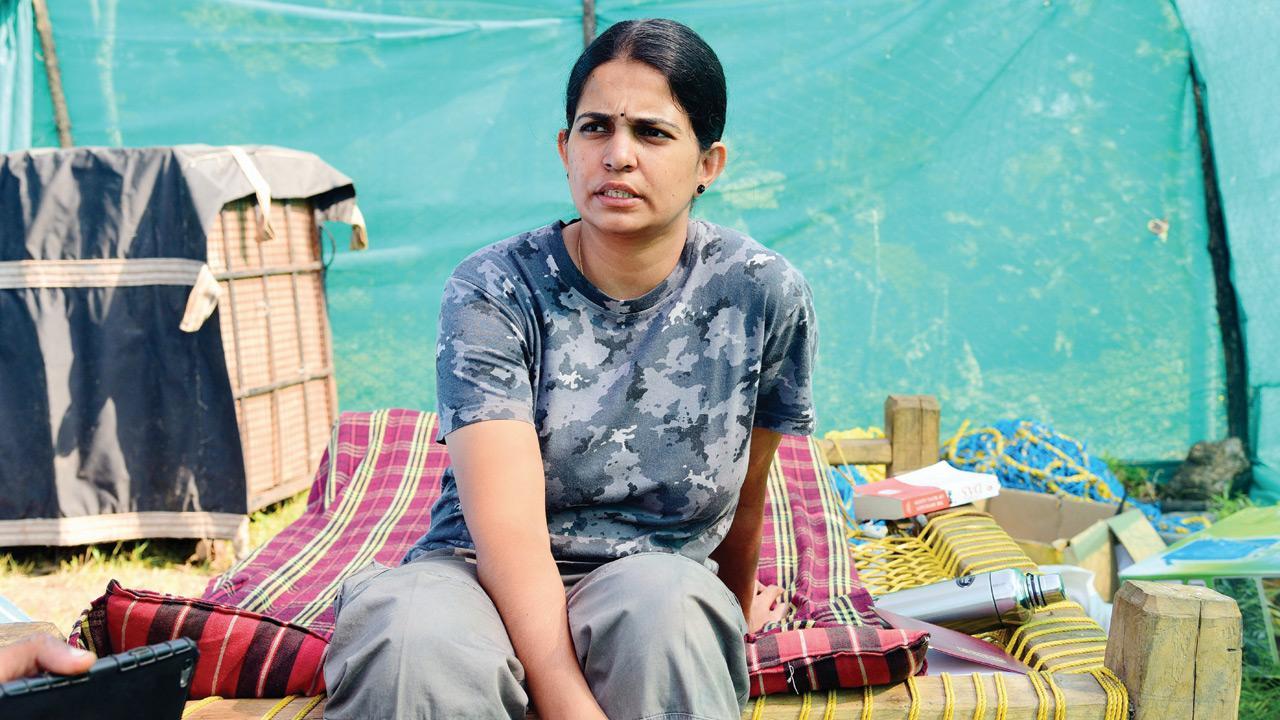Mid-day’s wildlife and environment correspondent Ranjeet Jadhav calls Sherni a good attempt and a well-written film
8:29 AM
Posted by Fenil Seta

K M Abharna, the deputy conservator of forests (DCF), Pandharkawada, was heading the operation to trap the tigress T1. Pic/Shadab Khan
mid-day’s wildlife and environment correspondent, who extensively covered the killing of tigress T1 for this paper, gives his thumbs up to 'Sherni'
Ranjeet Jadhav (MID-DAY; June 19, 2021)
Bollywood has not attempted a film on the complex, but important, subject of man-animal conflict in such detail and Sherni is a good attempt. The story seems to have been inspired by the cold-blooded shooting of the tigress Avni (or T1) in Yavatmal, Maharashtra. Back in 2018, I had reported from Pandharkawda in Yavatmal about how the son of a controversial private shooter had killed T1, who was responsible for the death of 13 villagers. (Disclosure: I was consulted by the makers at the early stages of scripting.)
The Maharashtra Forest Department, which enlisted the private hunter to resolve the issue, had faced a lot of criticism for their actions.
Balan’s IFS officer Vidya Vincent is modelled on Deputy Conservator of Forest K M Abharna, a smart and young officer, who was then leading the department’s mission to capture the tigress alive. From her looks to the way the character talks, it felt like Abharna was playing herself on screen; Balan has done so much justice to the role.
The film sheds light on the daily difficulties of the forest department in such areas. It also highlights how the actions of an inexperienced and unqualified person can make things spiral out of hand.
However, the film doesn’t show the involvement of expert veterinarians and elephants who were brought from Madhya Pradesh to capture Avni alive. It would have been an interesting addition to the narrative, since not many know about how elephants are often used to catch wild tigers.
I mention this because the MP forest department has an excellent team that, in the past, has successfully rescued tigers and saved people. Given the liberty, they could have well captured Avni alive. Otherwise, the makers have been accurate in showcasing the use of camera traps and technology to monitor and track tigers. The locations in Sherni are realistic and resemble the forest and the adjoining habitats near Pandharkawda.
I hope this well-written film helps explain the complex man-animal conflict issue to the lay viewer effectively.
This entry was posted on October 4, 2009 at 12:14 pm, and is filed under
Interviews,
K M Abharna,
Madhya Pradesh,
Maharashtra,
Ranjeet Jadhav,
Ranjeet Jadhav interview,
Sherni
. Follow any responses to this post through RSS. You can leave a response, or trackback from your own site.
Subscribe to:
Post Comments (Atom)
Post a Comment